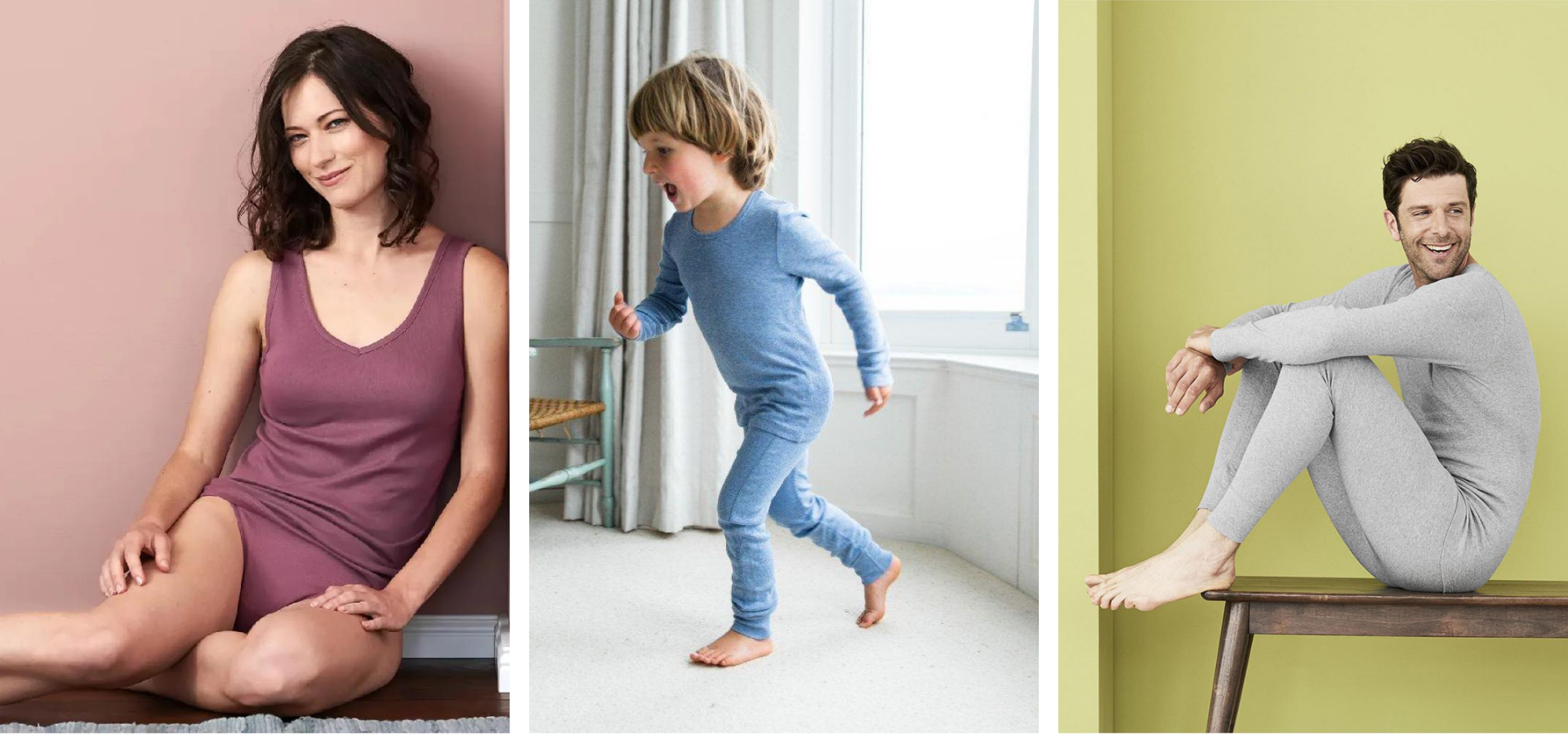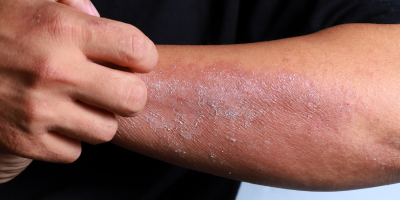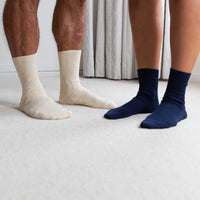In the week of World Environment Day on 5th June, we hope that organisations are thinking seriously about their impact on the environment.
At Eczema Clothing, we are actively investigating how we can help our customers reuse or recycle the clothes they purchase from us. 🌍(SPOILER ALERT - WE HAVE A NEW SCHEME LAUNCHING IN THE AUTUMN)🌍 We know that many of our customers value our ethics in how we only use and source organic cotton for our Cotton Comfort brand clothes and are concerned about sustainability overall.
In fact, a Global Sustainability Study* in 2021 found 59% of shoppers agreed sustainability was either “extremely” or “slightly important” to them when buying clothes and footwear. These attitudes may well be in response to the rise of fast fashion, with more than 100 billion** items of clothing produced globally each year, according to some estimates, and 65% of these ending up in landfill within 12 months***. The fashion industry is estimated to be responsible for 8-10% of global carbon emissions, according to the UN.
There are a number of solutions for items that are still wearable, and which can be reused. The second-hand clothing market has grown enormously with online marketplaces such as eBay, Vinted and Depop. For example, Vinted has eight million users now, up from 1.2 million in 2021. At the same time charity shops have seen an uptick in business, as have renting and sharing clothing schemes. There are predictions that second-hand will be twice the size of fast fashion by 2030.
In addition, a number of retailers have launched their own take back schemes, where customers are encouraged to return their clothes once they have finished with them. In this way the retailer shares the responsibility for the outfit’s afterlife with the consumer.
However, more work needs to be done on finding solutions for clothes that are no longer wearable and recycling the textiles they are made from, as these are the items that end up in landfill. The ideal solution - recycling clothes back into new garments - is currently very hard to achieve, with just 1% of recycled clothes turned back into new garments****. For example, many high street stores with take-back schemes, including Levi Strauss and H&M will either resell the items they receive (for example, to charity shops), re-use them (convert into other products, such as cleaning cloths or mops) or recycle them (into carpet underlay, insulation material or mattress filling), but do not offer recycle into new clothing an option.
Textile recycling is still in its infancy, but there is a lot of innovation and finance going into finding new solutions and factories which can make it happen. Much of the problem comes down to what our clothes are made from. The fabrics we use to make our clothes are complex combinations of fibres, fixtures and accessories. They are made from blends of natural yarns, man-made filaments, plastics and metals, which need to be sorted - usually by a person - before they can be recycled. Clearly, having clothes made only from pure organic cotton, such as those made by our Cotton Comfort brand, will make this easier.
There are several methods of textile recycling, including mechanical recycling, chemical recycling, and upcycling. Mechanical recycling involves shredding the cotton fibres and then spinning them into new yarns. Chemical recycling involves breaking down the fibres using chemicals, then using the resulting material to make new textiles. Upcycling involves taking used textiles and transforming them into new products, such as bags or clothing.
In the UK, several companies are already working on cotton textile recycling. For example, Worn Again Technologies is a company that specialises in textile recycling using chemical processes. Another company, Teemill, upcycles old textiles into new clothing. In Europe, the Swedish pulp producer Renewcell has just opened the world's first commercial-scale, textile-to-textile chemical recycling pulp mill, after spending 10 years developing the technology.
Here at Eczema Clothing, we are determined that our in-house brand, Cotton Comfort will be in vanguard of the reuse and recycle requirements of the future. Watch this space.
*https://www.simon-kucher.com/sites/default/files/studies/Simon-Kucher_Global_Sustainability_Study_2021.pdf
**https://www.mckinsey.com/capabilities/sustainability/our-insights/style-thats-sustainable-a-new-fast-fashion-formula
***https://cleanclothes.org/fashions-problems/waste-and-pollution
****https://ellenmacarthurfoundation.org/articles/the-trends-and-trailblazers-creating-a-circular-economy-for-fashion




















